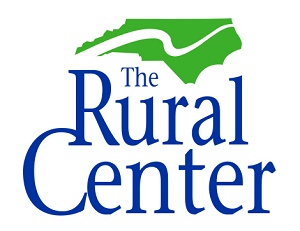
 Special to the Philanthropy Journal
Special to the Philanthropy Journal
By Kelsie Ballance and Sarah Wentz
As a land-grant university, NC State is committed to providing students hands-on, highly-engaged learning opportunities AND to providing research that is of direct, practical use to the fields we work in. Philanthropy Journal proudly presents this series of evidence-based resource articles developed by Dr. Amanda J. Stewart‘s masters level Management of Nonprofit Organizations class. These articles represent a perfect overlap of engaged learning and practical research.
Most nonprofits understand the benefits of engaging clients in program planning and decision-making, and often provide opportunities for community participation. In practice, however, many nonprofits lack long-term communication strategies. Without mechanisms in place for maintaining open and ongoing dialog with the people they serve, organizations risk becoming disconnected and unresponsive to the needs of clients.
 For other nonprofits, a significant challenge is understanding how to combine engagement with empowerment, and effectively balance the short-term and long-term needs of clients. Organizations that use community engagement strategies to simultaneously build capacity are more likely to create sustainable outcomes. This holds true for nonprofits working at local, state and international levels.
For other nonprofits, a significant challenge is understanding how to combine engagement with empowerment, and effectively balance the short-term and long-term needs of clients. Organizations that use community engagement strategies to simultaneously build capacity are more likely to create sustainable outcomes. This holds true for nonprofits working at local, state and international levels.
What do effective community engagement strategies look like in practice?
So how do nonprofits use their expertise and experience to develop effective interventions, while at the same time building-up the skills and knowledge of citizens? To inform nonprofits’ understanding of successful community engagement strategies, this article offers insights and examples from the NC Rural Center (Rural Center).[1]
The Rural Center employs engagement strategies to keep the organization connected with the people they serve over the long-term. But most importantly, the organization helps clients develop skills and resources needed to successfully plan and implement their own interventions. The Rural Center’s strategies can be applied to different types of nonprofits in different contexts, and offer useful takeaways for helping nonprofits avoid paternalism.[2]
Understanding the value of community engagement
Though many communities face similar problems and share similar needs, local factors vary the complexity of problems and solutions. Cookie cutter interventions are unlikely to be productive because it is difficult to generalize causal relationships. Interventions that work well in one community may not be effective in neighboring communities because of factors unique to a place or population. Therefore, programs built from the bottom up, crafted together with input and feedback from local citizens, are more likely to address problems in effective and sustainable ways.
Maintaining relationships with clients and providing channels for citizens to express their needs quickly and comfortably is part of the Rural Center’s community engagement strategy. For example, many board members and employees have ties to rural North Carolina and maintain connections with their hometowns, offering avenues for clients to communicate with the organization. However, representation alone, without relationships, does not lead to improved responsiveness.[3] For this strategy to facilitate communication, staff and board members must be considered trustworthy and approachable.[4]
For this reason, the Rural Center maintains a strong presence in the field, which builds trust and breaks down communication barriers. Instead of toggling in and out of clients’ lives, staff, including executive leadership, meet with and talk to community members on an ongoing basis. This year, the Rural Center’s executives are participating in a tour of the state’s 80 rural counties to meet with rural residents and discuss their needs in-person. Other nonprofits can implement similar strategies for staying connected, through field work or representation; but the goal should be building genuine relationships with clients, and improving approachability at all levels of the organization.
Community engagement, if done correctly, establishes trust and builds collaborative relationships between organizations and their clients. These relationships help staff understand and navigate local idiosyncrasies, and improve organizational responsiveness. Mechanisms for ongoing feedback and communication enable the organization to quickly identify changes and redirect services appropriately to remain effective.
Closing the expertise gap through training and support networks
However, incorporating input and feedback from local stakeholders is only the first step toward creating sustainable solutions; the next challenge is reducing the expertise gap between staff and clients.[5]
In many situations, nonprofits possess technical expertise that sets them apart from the citizens they serve. For this reason, staff (and to some extent, volunteers) may approach disadvantaged communities with a “father-knows-best” mindset that disregards useful local knowledge. One way to reduce this form of paternalism is by narrowing the gap through capacity building. Organizations that bridge the expertise gap look beyond immediate needs of communities, identify skills and resources local citizens need to take-on initiatives themselves, and then provide the necessary support to develop those skills. This involves ongoing scaffolding from the organization, and requires engagement strategies that create two-way learning and open communication.
The Rural Center builds local capacity through annual training programs, which teach the technical skills necessary for managing business growth and community development projects. This model uses staff expertise and experience to train citizens, who in turn, take these skills back to their communities. Importantly, the organization’s connection with trainees does not end with the program. Staff nurture genuine, long-lasting relationships with clients through regular communication, site visits and network building. This keeps the organization connected to rural communities, and enables staff to coach participants on an ongoing basis as they apply their skills outside the classroom. By taking engagement strategies to the next level, through training and empowerment, nonprofits can better address short-term and long-term problems.
Community engagement is not easy or costless, but is valuable for nonprofits interested in improving effectiveness and reducing paternalism. Nonprofits that are successful in getting communities involved in decision-making, can more easily transition to capacity building. Effective nonprofits promote skill development and foster expertise within local communities through training, coaching and resource support. This requires approaching clients as equals, seeing community members as fellow experts who can contribute to their own success if given the right tools. The role of nonprofits is therefore, to provide appropriate tools and teach their clients how to use them.
[1] The authors would like to thank the President of the Rural Center, Mr. Patrick Woodie, and the organization’s Senior Director of Public Affairs, Mr. Todd Brantley for their contributions to this article.
[2] Paternalism here refers to a sense of superiority among service providers; see Brooks (2012) for a discussion of paternalistic ideology among nonprofits.
[3] Being from a rural county does not mean you understand the needs of all rural citizens.
[4] See Browning, Marshall & Tabb (1986).
[5] For a discussion of narrowing the expertise gap, see Ansari, Phillips & Zwi (2002).
Kelsie Ballance grew up in eastern North Carolina. She graduated from NC State University in 2007 with bachelor’s degrees in psychology and anthropology. Since then, she has worked for various nonprofits, and now works for the NC Department of Transportation. She is currently a part-time graduate student, and hopes to pursue a career in international public administration.
Sarah Wentz is a pursuing a Master’s degree in Global Studies at the University of North Carolina at Chapel Hill. Her thesis project is focusing on communications of international economic development nonprofit organizations. In addition to school, Sarah works full-time developing policies and procedures in the private sector.





